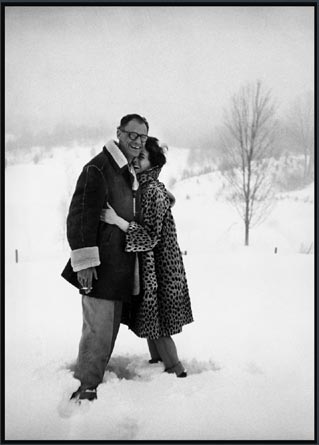

![]()
Inge Morath, who died too soon last week
at the age of seventy-eight, was a subtle and evocative photographer who
used her camera as a means of celebrating what she respected and valued:
civilization, artistic achievement, the splendor of women, the significance
of place.
Born in Austria between the two world wars, Morath studied languages as
a young woman. She loved words and set her course to be a writer and editor.
However, the Second World War's gruesome power intervened and would mark
Morath for life. Like other millions, she became displaced, but through
her wanderings in a torn-up Europe she unexpectedly found joy in photography.
In Paris after the war, Morath met and joined up with an eclectic group
of young photographers all men- who would later found Magnum Photos.
Morath started as an editor, but soon afterward surprised them all with
a set of photographs she took in Spain as a lark. After this, Morath used
the camera as a tool for exploring her passions. The results were a compelling
series of books beginning in the 1950s with Guerre à la tristesse
(War On Sadness), Fiesta in Pampelona and De à la
Perse lıIran (From Persia to Iran).
Morath was a European by birth and breath, but her 1964 marriage to American
playwright Arthur Miller turned America into her home. Her collaborations
with Miller, the 1967 In Russia ,the 1977 In the Country
and the 1979 Chinese Encounters, gave her the opportunity to fuse
the two expressions she cared most about, images and words, into one.
Morath remained a keen student: she was already fluent in German, French,
English and Spanish yet studied in-depth the cultures she photographed,
even learning difficult languages like Mandarin and Russian. A shrewd
observer of people and their quirks, she loved to photograph those whose
work she admired: through the years she made hundreds of portraits of
artists the world over, an unmatched photographic compendium of arts and
letters in the twentieth century. She also used photography to express
an idiosyncratic sense of humor: look, for instance, at the marvelous
series of mask images she made with Saul Steinberg. And while she had
a knack for making photographs which could have immediate impact, such
as her well-known shot of Mrs. Eveleigh Nash, Morathıs real gift as a
photographer her curiosity and spirit- shine in the portraits of places
she worked on for so many years. These, like all of her photographs, reveal
their depth and complexity to us, over time, with nuanced grace.
Esther SAMRA
![]()